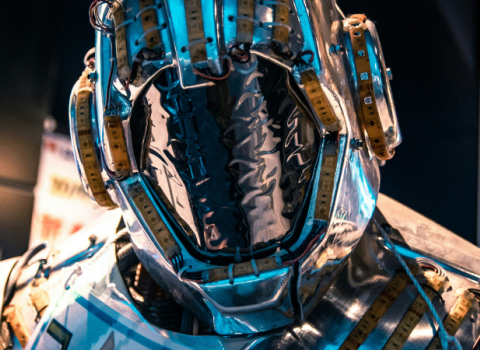European Commission analysis finds that AI boosts the novelty of papers, but warns there could be dangers in its use

Photo credits: Dan74 / BigStock
Chinese scientists have incorporated artificial intelligence into their work more rapidly than their EU or US counterparts, a European Commission analysis has found, bolstering the case for the bloc to speed up adoption.
New AI aids, such as the protein folding prediction tool AlphaFold, have changed how some scientists work, although there are concerns that an overreliance on AI could reduce scientific serendipity, for example.
This new analysis, Artificial intelligence in science: promises or perils for creativity?, tracks this growth in AI-assisted science, quantifies whether or not it is beneficial, and which countries are using it most.
“In recent years, China has taken the lead in AI-driven research, outpacing both the US and the EU, not just in sheer output, but also in terms of scientific novelty and impact,” the analysis, written by several Commission officials and a University of Strasbourg researcher, concludes.
It looks at around 3 million papers from 2000-22, and finds that the share of papers using AI aids spiked from just under 30% in 2010 to nearly 40% in 2022. This is likely down to the advent of deep learning from 2010, the authors say.
There has been a “particularly striking performance” by China since 2016, the analysis finds. Since then, the number of Chinese scientific papers using AI aids has surged, overtaking both the US and EU, to reach more than 25,000 by 2022 in the dataset used.
In contrast, the EU published around 15,000 papers using AI in 2022, and the US around 12,000. China also leads when just looking at the most cited papers.
The paper recommends more funding, infrastructure and training to speed up adoption of AI, although it cautions that “systematic evidence” on what works best is still lacking. Most national AI strategies lack actual measures to help scientists better use the technology, it says.
AI Research Council
In Brussels, there are now several initiatives to boost AI take-up in science, although they are so far at an early stage. The Commission is currently consulting on a new strategy, for example.
It has also said a mooted “CERN for AI” will improve adoption, a promise that has morphed into the construction of four AI gigafactories, each with around 100,000 chips to train new AI models.
In addition, the Commission has proposed a so-called European AI Research Council, with a pilot scheme planned for 2026, according to an action plan released on April 9 to make Europe an “AI continent.”
This initiative “will pool resources that push the technological boundaries of AI and tap into its potential to facilitate scientific breakthroughs,” the plan says, although there are no hard figures on funding.
Is AI useful?
The Commission’s analysis warns that it’s not a given that AI tools in science will be beneficial overall. “AI could just as easily hinder scientific progress as accelerate it,” the paper says.
Of course, there are plenty of potential uses. Aside from tools like AlphaFold, AI can also help scientists navigate an overwhelming number of new papers, the paper points out. It can also generate new datasets, or help automate tedious management work, like coordinating scientists on a project.
Related stories:
- EU to invest €50B to ‘supercharge’ innovation in artificial intelligence
- Viewpoint: Time to strengthen Europe’s leadership through AI in science
The hope, the analysis says, is that AI can help overcome a seeming slowdown in science, where the returns on research investment appears to be falling.
However, it also lists multiple disadvantages. Neural networks are notoriously opaque in exactly how they work, raising questions over any scientific insights they produce.
There’s also the risk of “paradigm lock-in,” the authors warn, as scientists limit themselves to hypothesises that are testable with AI tools.
More novelty
To shed light on this question, the analysis tested whether AI makes papers more novel or impactful. It found that papers that used AI aids were more likely to include new words, phrases and combinations of the two, a proxy for novelty.
It also found that AI papers enjoyed a 3% bump in the citations they received. “Our results offer an optimistic perspective on the benefits AI can bring to scientific creativity,” the paper concludes.
But there’s a big caveat on causality. It could be that scientific teams with more novel ideas were more willing to adopt AI, rather than the AI aids actually leading to novelty, the paper warns.
Chinese papers using AI received a bigger boost in novelty and citation scores than those in the EU or US, the paper found.
“Substantial government investment in AI research and large-scale AI infrastructures aimed at accelerating technological progress [. . .] have positioned the country as a global leader also in terms of AI-driven novelty and impact,” it found.
AI Continent
The Commission’s AI Continent Action Plan, presented on April 9, is built around five priorities: infrastructure, data, adoption, talent and simplification.
The roadmap aims to build on Europe’s strengths, said Henna Virkkunen, executive vice-president of the Commission, as she presented the plans. “We are very strong in Europe when we look at our scientific community and researchers on AI, we have the biggest amount of researchers in the world per capita when we look at the AI sector.”
While the EU executive insists it is committed to the risk-based approach of the AI Act, the text, adopted last year, could already be in need of modification. The Commission is looking at whether there is “some extra administrative burden or some reporting obligations we could cut to make it easier for businesses,” Virkkunen said.
Meanwhile, the Commission has launched a call for interest to set up AI Gigafactories. The EU hopes to mobilise €20 billion for up to five gigafactories, with the share of the Commission’s contribution depending on interest from member states and private investors. It has opened two public consultations, one on a future Cloud and AI Development Act, the other on the upcoming Apply AI strategy.
Virkkunen also confirmed that the Commission is in talks to launch a second iteration of the EU Chips Act, which will include a focus on advanced AI chips. In January, the US imposed restrictions on exports of advanced graphics processing units, which are crucial for the development of AI models, to several EU countries.




 A unique international forum for public research organisations and companies to connect their external engagement with strategic interests around their R&D system.
A unique international forum for public research organisations and companies to connect their external engagement with strategic interests around their R&D system.